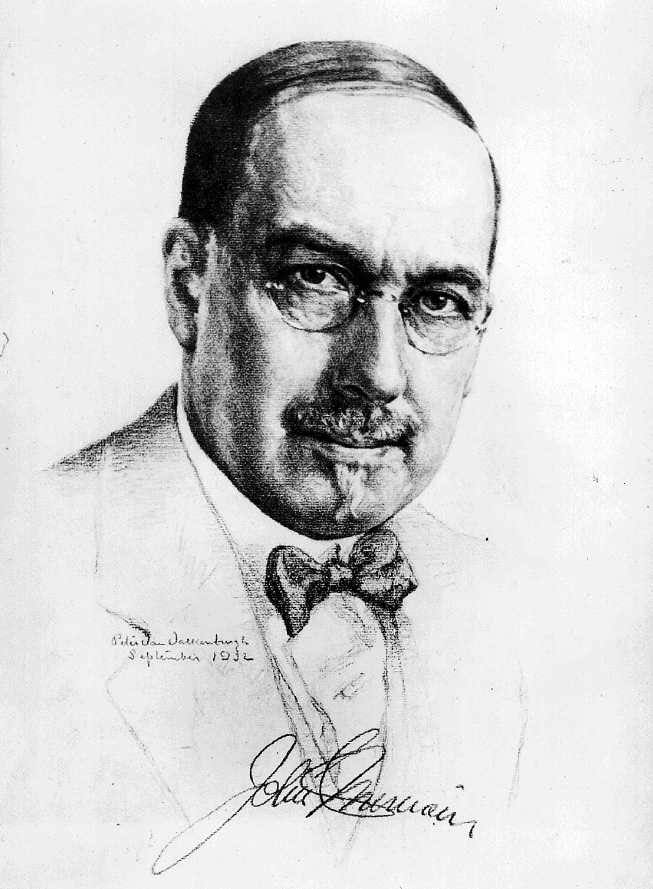First Scientific Study of
La Brea
In 1875, professor William Denton
identified a tooth from the pits as being from an extinct species we now
know as saber-toothed cat. It was not until the early 1900's, when a professor
at the university of California, John C. Merriam, who began studying and
carrying out research and excavation at the La Brea site on vertebrate
and invertebrate paleontology. Upon examination of the fossils within the
tar pits, Merriam made key observations which led to further work, and
conclusions that La Brea housed fossils of further extent, other than just
unlucky cattle, as Denton had found out 25 years earlier.
 Merriam
carried out the bulk of his research from 1900 to 1919. He and his student
Chester Stock described many of the vertebrates from La Brea, including
saber-toothed cat (Smilidon californicus), as well as other large cats,
wolves, and camels, etc. As his reputation grew with his research and published
work, his original researched slowed as he took on more administrative
duties as his career advanced. Although he continued to oversee the continuation
of what he started with more paleontological research and the continued
excavation of La Brea.
Merriam
carried out the bulk of his research from 1900 to 1919. He and his student
Chester Stock described many of the vertebrates from La Brea, including
saber-toothed cat (Smilidon californicus), as well as other large cats,
wolves, and camels, etc. As his reputation grew with his research and published
work, his original researched slowed as he took on more administrative
duties as his career advanced. Although he continued to oversee the continuation
of what he started with more paleontological research and the continued
excavation of La Brea.
Through the work of Merriam, his
students, and continued research and excavation of the La Brea tar pits,
a premier collection of Pleistocene fossils, has been amassed with more
than 500 species found, and in excess of 200 tons of fossil bones recovered
from the tar pits.



 Merriam
carried out the bulk of his research from 1900 to 1919. He and his student
Chester Stock described many of the vertebrates from La Brea, including
saber-toothed cat (Smilidon californicus), as well as other large cats,
wolves, and camels, etc. As his reputation grew with his research and published
work, his original researched slowed as he took on more administrative
duties as his career advanced. Although he continued to oversee the continuation
of what he started with more paleontological research and the continued
excavation of La Brea.
Merriam
carried out the bulk of his research from 1900 to 1919. He and his student
Chester Stock described many of the vertebrates from La Brea, including
saber-toothed cat (Smilidon californicus), as well as other large cats,
wolves, and camels, etc. As his reputation grew with his research and published
work, his original researched slowed as he took on more administrative
duties as his career advanced. Although he continued to oversee the continuation
of what he started with more paleontological research and the continued
excavation of La Brea.

